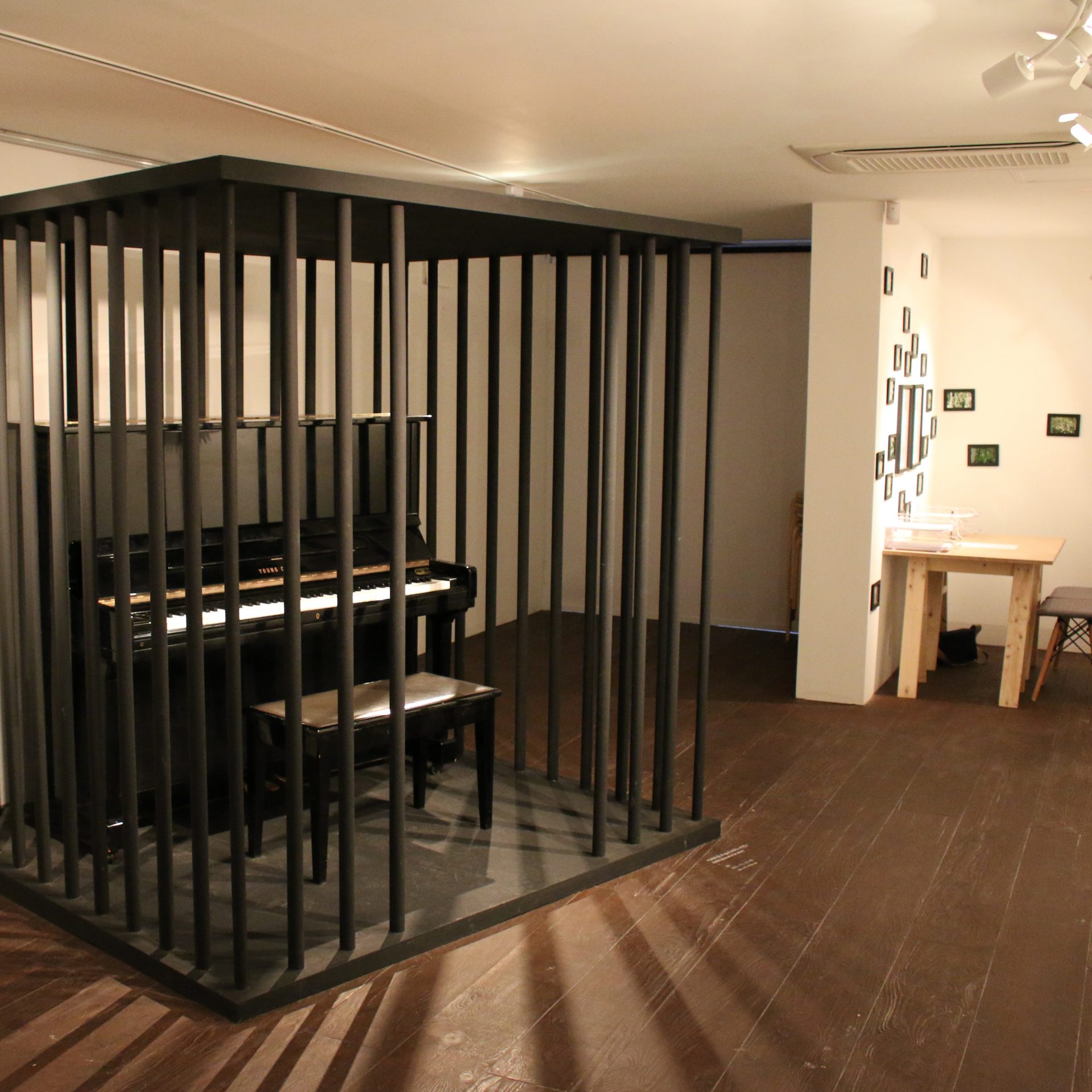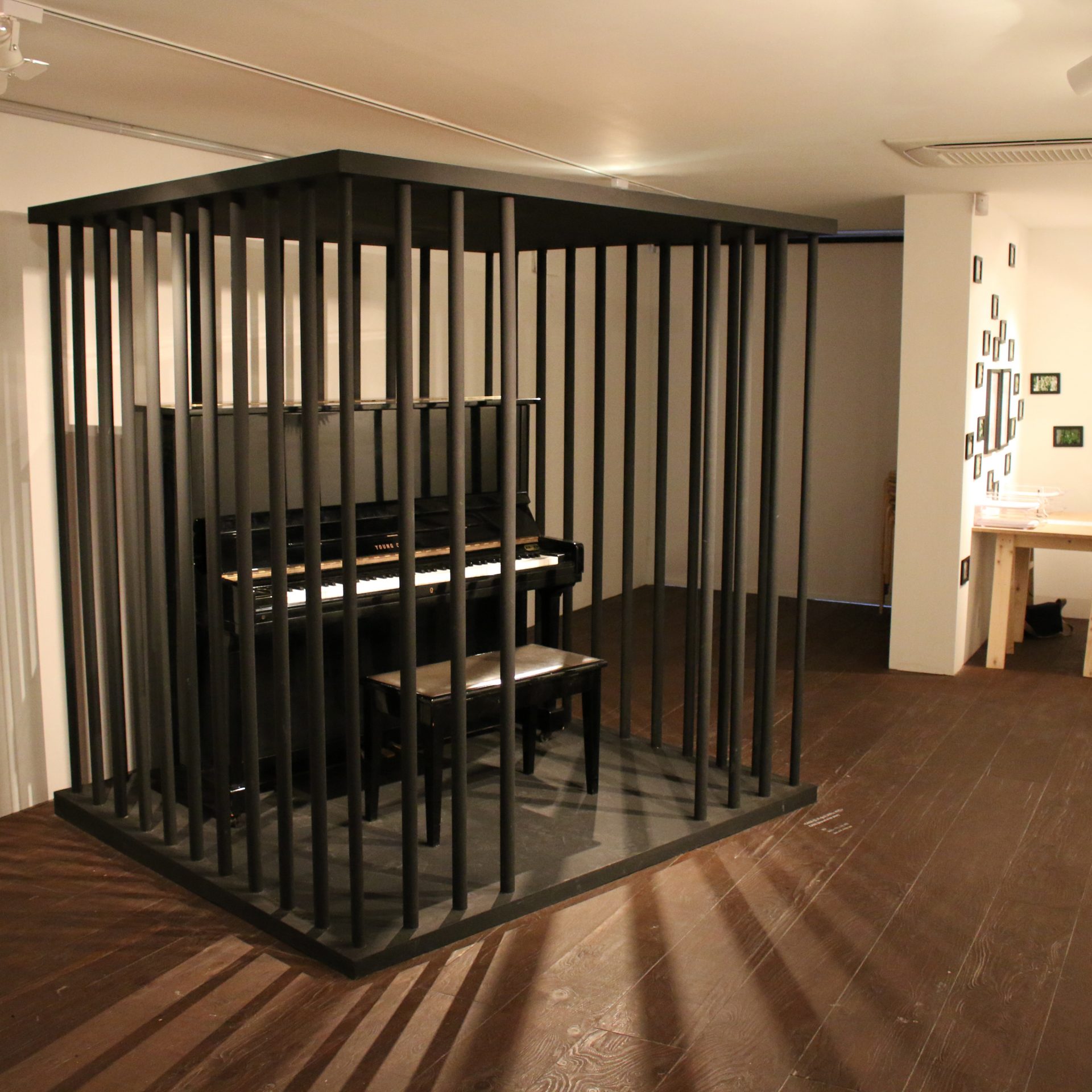Rémi Klemensiewicz’s is from Marseille and works between France and Korea. His major media is sound, exploring perception and reinterpretation of sound, the relations of sound and visual, and various symbols and senses. The artist presents a broad range of intermedia work including sound installation, performance and stage music.

3_해미-클레세비츠-1920x1920
1. Please introduce yourself and your work.
I was born in Marseille where I grew up and studied art. For the past 8 years, I am living between France and Korea. Before I was even interested in visual arts, I played and composed music. Consequently, when I entered the art school, one of my first questioning was: “How can I possibly conciliate my musical practice with visual art?” Of course, I quickly discovered that it was a whole field of exploration for decades. I was particularly interested in the idea of structural correspondence or maybe, more precisely, possible equivalent systems between the visual world and the acoustic world. I was never really attracted by any technical or scientific approach, but rather by metaphorical (poetic) and open processes. Then I quickly realized language can play a very central role in my experimentations. I like the idea of using determined processes (of course, language is all about determined rules and ordinance) but in order to explore unpredictable results and reflexions about our perception of sound in culturally-determined contexts.
2. How did you find it to take part in the project Random Access?
First, I was of course very glad to be invited to take part in Random Access. During the past years, I have collaborated several times with Nam June Paik Art Center so I knew the place and the people working there. What is particularly exciting in such a context is that you are free to develop your work with almost no restrictions. The Random Access project seems to be an opportunity for young artists to have an enabling environment for experimentations. I consider I seized this opportunity because I was able to do an exhibition and have regular performances as well. For that, I am thankful to the people that helped me during this period. I am eager to see how Random Access will develop in the future.
3. Your works transcend the boundaries of sound art, visual art, performance and exhibition. As a curator of Random Access, I think your work resonates with Paik’s Fluxus activities, and intermedia aspects in between art and technology, between art and daily life. Which part of your work do you think is personally or artistically connected to the artist Paik?
When I started to get interested in the history of sound in visual arts, I quickly encountered the Fluxus movement and Paik in particular. The fact that Paik started as a musician and used the musical world’s code for his early performances was very significant to me. He then became very famous for his experimentations with video but it is clear that his musical background never left him. What he incarnated (with the Fluxus movement) is a mixture of humor, wit, irreverence with recurrent references to Asian philosophy; all of this was absolutely decisive in the way I will continue my works.
4. Tell us more about what you showed in Random Access.
For the exhibition, I presented three works. C.A.G.E. for Piano is a development of one of the first series I started. I am playing with the difference between the seven musical notes names: Do, ré, mi, fa, sol, la, si (first used in countries of Latin/Catholic culture) and C, D, E, F, G, A, B (inherited from ancient Greece and preserved in countries of Protestant cultures). The idea here is to play with the connection between a melody and a word (or an object). I installed a big cage with a piano inside, but on the piano, only four notes can be played (C, A, G, E / do, la, sol, mi), the other notes are muted. The visitor was invited to enter the cage and play the only four available notes: C.A.G.E. This work aims at playing with dual and structural relations: verbal language and musical language, physicality and representation, sound and visual.
The second work is called Daisy Fleabane Project. This work is about the story of a flower, the Daisy Fleabane, and its introduction to Korea. The Daisy Fleabane was accidentally introduced to Korea through Japan from the late 19th and early 20th centuries. At that time, this flower became a symbol of misfortune for Koreans because it was deeply associated with the Japanese colonial period. But later, the North American origin of the flower was discovered. Today this story is mostly unknown and the Daisy Fleabane go unnoticed because it got totally banal. This story of the origin and development of the Daisy Fleabane and its introduction to Korea seems to contain a very heavy symbolic and metaphorical weight. It might lead you to question the relations and especially power relations (past and present) between peoples and how our perception of it evolves through time. In this work, the visitor is invited to answer some questions concerning the story of the flower. The answer’s content will be recorded through speech synthesis then diffused through the Daisy Fleabane-looking speakers. The narrative contents of the speakers are modified and developed all along the exhibition through visitors’ participation.
The third work is called Sound Word Series. The idea is very simple. I wrote two Korean words. I used the round shape of the speaker to represent the Hangeul letter “ㅇ” and I drew the lines representing the rest of the letter with the speaker cable. The two words are: “종” (with a speaker diffusing the sound of a bell) and “총” (with a speaker diffusing the sound of a gun). I usually describe this work with simple sentences: An object as a word; a word as a sound; what you hear is what you see; what you see is what you hear. During the exhibition I organized several performances where I invited musicians to improvise with me. Only one condition: when we are playing within the cage, whatever instrument we are using, we have to play music only using the four notes: C, A, G, E.
All these works are like invitations to question the structural connection between language, its acoustic or musical expression and its visual representation. In a way, all these abstract correspondence systems between sound and visual are like pretexts or tools to take a concrete, physical and incarnated look at our historical and social surrounding.
5. Three years have passed since then. You have participated in various group shows. Could you tell us about the activities you have engaged in since Random Access and about your future plans?
After my participation in Random Access I keep doing both exhibitions and performances, and when it is possible (like with my exhibition Disbanding Tendency) I am doing both at the same time! During the past two years my researches around sound led me towards studying linguistic more deeply, giving me great inspiration. Because of the current situation, I participated in several projects in Korea while being in France. Video performance, composing music for contemporary choreographer but also doing exhibition. That is not an easy thing but everything is somehow working. The situation makes us find some strategies to keep working despite all the difficult conditions. Of course I hope the way most of us are working now is just temporary. I am really looking forward to playing live music again.
6. Do you have any comments or episodes you would like to share about Random Access?
As I said previously, it was a great experience because I knew the place and most of the people working there. It is always a pleasure to work with people you have affinity with. Other than that, considering how influential Paik was for me (as for many artists I presume) it is great to have your work in a place that bears his name. Considering the project Random Access itself, I hope many other artists will get the chance to show their work in this context. I do think this project is contributing to the vitality of the place.
Curator
Kim Sun Young
Interview
November 2020





